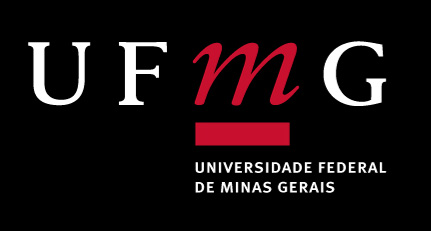The urbicide battlespace in Rio de Janeiro city
DOI:
https://doi.org/10.35699/2237-549X.2021.25529Keywords:
Militarization, Urban War, Battlespace, Urbicide, Rio de JaneiroAbstract
The article operating, methodologically, by the concepts of battle space and urbicide shows that the urban spectrum of militarization in the city of Rio de Janeiro, can no longer be conceived in a “traditional” surface conception, be it zonal or networked, but must to be intelligible as a whole, that is, as a volume, taking into account its multiple spatial rearrangements and new forms of violent expropriation, which characterize urbicide and show the city's configuration, if not in all, at least in certain areas, spatially segregated, in complex battle spaces. Rio de Janeiro illustrates, precisely, this complex scenario of overlapping scales and reorganization of territories, associating representations and actions, in space and territories, which question the approach of the horizontal notion of geography, of classic cartography. To elucidate these territorial changes, we propose a spatial model for understanding the current militarization dynamics of the city, in a three-dimensional perspective, built in an intuitive way, which proves to be original and questioning the traditional ways of conceiving space as a territory in dispute by different groups.
Downloads
References
COWARD, Martin. Urbicide in Bosnia. In: GRAHAM, Stephen (Org.). Cities, war and terrorism: towards an urban geopolitics. Oxford: Blackwell Publishing Ldt., 2004, p. 154-171.
______. Urbicide: the politics of urban destruction. Nova York: Routledge, 2009.
ELDEN, Stuart. Land, terrain, territory. Progress in Human Geography, v. 34, p.799-817, abril. 2010.
GRAHAM, Stephen. Cities as strategic sites: places annihilation and urban geopolitics In: ____(Org.). Cities, war and terrorism: towards an urban geopolitics. Oxford: Blackwell Publishing Ltd., 2004a. p. 31-53.
GRAHAM, Stephen. Cities under siege: the new military urbanism. Londres: Verso, 2011.
______. Constructing urbicide by bulldozer in the occupied territories. In: ____. Cities, war and terrorism: towards an urban geopolitics. Oxford: Blackwell Publishing Ltd., 2004b. p. 192-213.
______. Introduction: cities, warfare, and states of emergency. In: ____. Cities, war and terrorism: towards an urban geopolitics. Oxford: Blackwell Publishing Ltd., 2004c. p. 1-25.
______. Vertical geopolitics: Baghdad and after. Antipode: a radical journal of geography, v. 36, p. 12-23, 2004d.
HAESBAERT, Rogério O mito da desterritorialização: do “fim dos territórios” à multiterritorialidade. 3. ed. Rio de Janeiro: Bertrand Brasil, 2007.
______. Viver no limite: território e multi/transterritorialidade em tempos de in-segurança e contenção. Rio de Janeiro: Bertrand Brasil, 2014.
LEFEBVRE, Henri. O direito à cidade. São Paulo: Centauro, 2001.
MENDONÇA, Márcio José. A cidade como espaço de batalha: de Gaza ao Rio de Janeiro. Geousp – Espaço e Tempo, v. 21, n. 3, p. 685-702, 2017.
______. A cidade como espaço de batalha urbicida. 2019. 309 f. Tese (Doutorado em Geografia) – Programa de Pós-graduação em Geografia, Universidade Federal do Espírito Santo, Vitória, 2019a.
______. Geografia do policiamento aéreo nas metrópoles brasileiras. GeoTextos, v. 15, n. 1, p. 89-111, 2019b.
______. Militarização volumétrica no Rio de Janeiro: entre o tráfico de drogas e o policiamento. GEOgraphia, v. 20, n. 44, p. 71-83, 2018.
SHAW, Martin. New wars of the city: relationship of “urbicide” and “genocide”. In: GRAHAM, Stephen (Org.). Cities, war and terrorism: towards an urban geopolitics. Oxford: Blackwell Publishing Ldt., 2004, p. 141-153.
SOUZA e SILVA, Jailson de; FERNANDES, Fernando; BRAGA, Raquel. Grupos criminosos armados com domínio de território: reflexões sobre a territorialidade do crime na Região Metropolitana do Rio de Janeiro. In: Justiça Global. Segurança, tráfico e milícia no Rio de Janeiro. Rio de Janeiro: Fundação Heinrich Böll, 2008, p. 16-24.
SOUZA, Marcelo Lopes de. A prisão e a ágora: reflexões em torno da democratização do planejamento e da gestão das cidades. Rio de Janeiro: Bertrand Brasil, 2006.
______. Cidade e militarização, de “norte” a “sul”. In: GRAHAM, Stephen. Cidades sitiadas: o novo urbanismo militar. São Paulo: Boitempo, 2016.
______. Fobópole: o medo generalizado e a militarização da questão urbana. Rio de Janeiro: Bertrand Brasil, 2008.
______. O território: sobre espaço e poder, autonomia e desenvolvimento. In: CORRÊA, Roberto Lobato; GOMES, Paulo C. da Costa; CASTRO, Iná Elias de (Orgs.). Geografia: conceitos e temas. 12. ed. Rio de Janeiro: Bertrand Brasil, 2009, p. 77-116.
WEIZMAN, Eyal. Hollow land: Israel’s architecture of occupation. Nova York: Verso, 2012.
______. Strategic points, flexible lines, tense surfaces, and political volumes: Ariel Sharon and the geometry of occupation. In: GRAHAM, Stephen (Org.). Cities, war and terrorism: towards an urban geopolitics. Oxford: Blackwell Publishing Ldt., 2004. p. 172-191.
______. The politics of verticality. 2002. Texto de 11 partes disponibilizado entre 23 de abril e 01 de maio de 2002. In: Open Democracy. Disponível em: < http://www.opendemocracy.net/ecology-politicsverticality/article_801.jsp>. Acesso em: 26 de mar. 2014.
Downloads
Published
Versions
- 2022-04-15 (2)
- 2021-07-02 (1)
How to Cite
Issue
Section
License
Copyright (c) 2021 Márcio José Mendonça

This work is licensed under a Creative Commons Attribution 4.0 International License.
Os artigos desta revista obedecem a licença Creative Commons — Attribution 4.0 International — CC BY 4.0









